Federal judge rules Trump’s deployment of National Guard in D.C. is ‘unlawful’
The 2,300 Guardsmen aren’t headed home just yet, though.
The British art of change ringing is both a physical and mental feat. And these obsessives can’t get enough.

At the top of the National Cathedral’s central tower — high above the Bishop’s Garden and the Cathedral grounds, up two rickety elevators and through the echoing upper rooms – the bell ringing chamber sits in relative quiet. A spacious room of cozy leather couches and sweeping views, the chamber feels suspended in midair. (“We like to call it our clubhouse in the sky,” says bell ringer Haley Barnett.)
At the center of the room, a group of people stands in a circle on an elevated platform, hands at the ready on their ropes.
“Look to, treble’s going, and gone!”
The call triggers a cascade of sound as the ringers begin pulling their ropes, at first in a recognizable order from the highest note (the treble) to the lowest. Then another call, and the bells begin changing positions: the second bell might now ring third, the fifth might now ring fourth, and so on. The effect is a waterfall of sound, an emerging pattern impossible to parse without a practiced ear.
“There is an indefinitely long learning curve to ringing,” says Alexander Taft, ringing master at the Washington Ringing Society (WRS), a group of Washingtonians dedicated to the old British artform of change ringing. “In no way, shape, or form could you ever possibly ring every method that’s out there. Just when you think you’re getting it, somebody comes up with a way to make it just a little bit harder.”
Change ringing was popularized in 17-century England, and it’s different from other forms of bell-ringing. Peal bells, as they’re called, do not produce music, exactly — they ring in a series of mathematical permutations. In any particular composition, the point is to ring these permutations without repeating any. Ringers stand in a room below the bells and pull ropes connected to a wheel mounted with a bell above. The pull of the rope causes the bell to swing nearly a full 365 degrees, sounding when the clapper hits the bell as it swings.
“For most people, it doesn’t sound like music,” says 76-year-old Quilla Roth, who’s been ringing since she was a teenager at the National Cathedral School in the 1960s.
I can attest. To me, the bells sound mathematical in a way that conjures confused days in high school calculus: I can hear that there’s a secret order beneath, but I can’t make out what it is. Still, the booming sounds of the bells are undeniably moving, ringing out over the Cathedral grounds and greeting the congregation as it steps out of Sunday worship service.
Watching the WRS ring after the Sunday service is a bit like watching a group of people meditate. On these days, the group rings what’s known as a quarter peal, about 50 to 55 minutes of uninterrupted ringing. Once in a while someone coughs, or makes a rushed move to push their glasses up their nose, but mostly they are in completely sustained, unbroken attention for nearly an hour. I am instructed to remain silent and still, also, to prevent distraction: Just one mistake has the potential to set off a cascading failure.
Quarter peals are high-stakes enough, but even more grueling are full peals, which last around of 3 hours and 25 minutes. Taft says he once attempted a peal during which, in the last five minutes, one of the ringers passed out. “It was like pulling a hamstring in the 25th mile,” he says. (The WRS last completed a successful full peal on New Years' Day.)
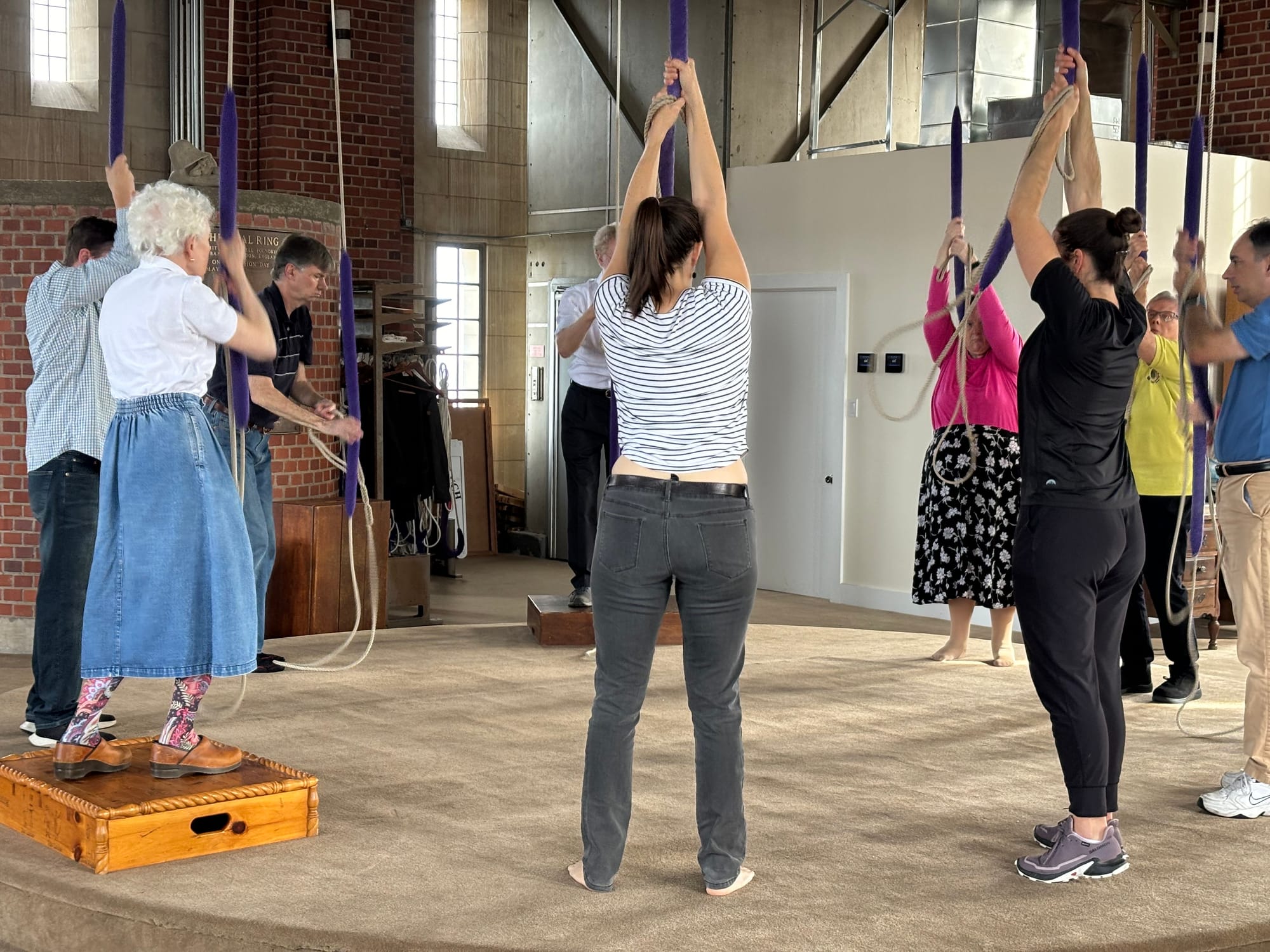
The Washington Ringing Society has existed in its current form since 1983, but people have been ringing the peal bells since they were installed in 1963. (The Cathedral also has carillon bells, which do produce music and are played via keyboard). A few people in WRS were around back then — Roth and her classmate at the National Cathedral School, Ann Martin, are in their mid-70s now, and both have been ringing for more than 60 years. Some high school and college students are current learners, and one of the most involved current members is in her thirties. There are around 25 active members from lots of different professions, most of which have nothing to do with math or music. (If you happen to be interested in joining yourself, you can reach out to Quilla Roth).
But everyone I spoke to in the WRS has something important in common: They are devoted to (some might even say obsessed with) the art of change ringing. Most of them can’t quite explain the draw, except to say there’s something deeply satisfying about it, both mentally and physically (it can take a year or more to learn to safely pull the bells, the heaviest of which in the Cathedral weighs more than 3,500 pounds). The patterns, of which there are countless to learn, can provide a unique kind of mental stimulation, and the sustained attention required to ring successfully can feel calming.
“I understand why people may learn this and start to think, ‘oh, no, this is really boring,’” says Roth. “But there are people who start it and become enraptured.”
This shared passion, which has carried them through years and sometimes decades of life together, has also made them close to one another.
“We’ve been caring for one another for a really long time, and I think we care really well,” Barnett says. Some ringers eat lunch together at the National Cathedral’s cafe after ringing sessions; they attend one another’s baby showers and weddings, and they prop each other up during hard seasons. This summer, Barnett says, was a particularly difficult time for her. One day, she opened her bag to find a card had been slipped in from the ringers, wishing her well. The gesture profoundly moved and buoyed her. “It makes me tear up even now,” she says.
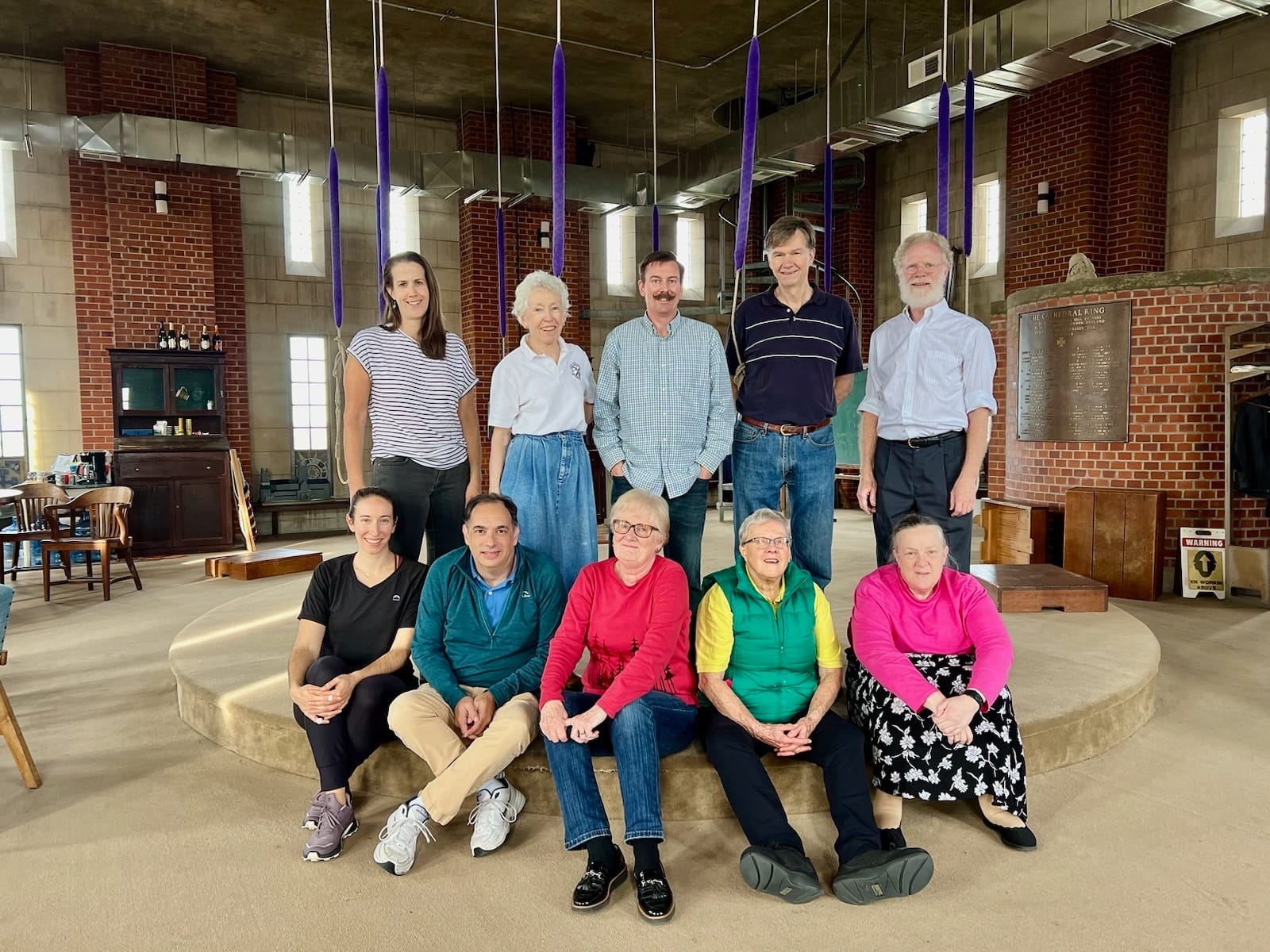
In addition to decades-long friendships, ringing brought 75-year-old Ann Martin to her husband. In 1966, when she was a senior at the National Cathedral School, she wrote an essay about change ringing for her English class that was eventually published in The Ringing World, a bell ringing magazine that has been in print since 1911. ("Bell-ringing for the past year and a half has been enslaving me," her essay begins. "I would do anything to ring, get up at six, do the dishes, thumb rides, not a normal attitude for me. I have tried to find a reason for this passion but it just escapes me.")
The Ringing World published her photo and address with the essay, and she began receiving letters from potential suitors, many of them across the Atlantic in England. "Some were odd," she says. "One man sent me a recording of a bunch of train whistles and asked if I would trade it for the sound of bells."
Only one, an accomplished ringer named Eddie Martin from Leicestershire, inspired her to write back. The two corresponded for years, until eventually she went to study at Oxford for a semester. "He fell in love with me and started following me around England and such," she says.
The two moved back to D.C. together, and were married for 44 years before his death in 2013. They were founder members of the North American Guild of Change Ringers and significant members of the WRS, Ann says. Eddie Martin's likeness is even carved into a wooden board in the ringing chamber, commemorating the 100th peal rung on the National Cathedral bells in 2001 (Ann was on bell #4).
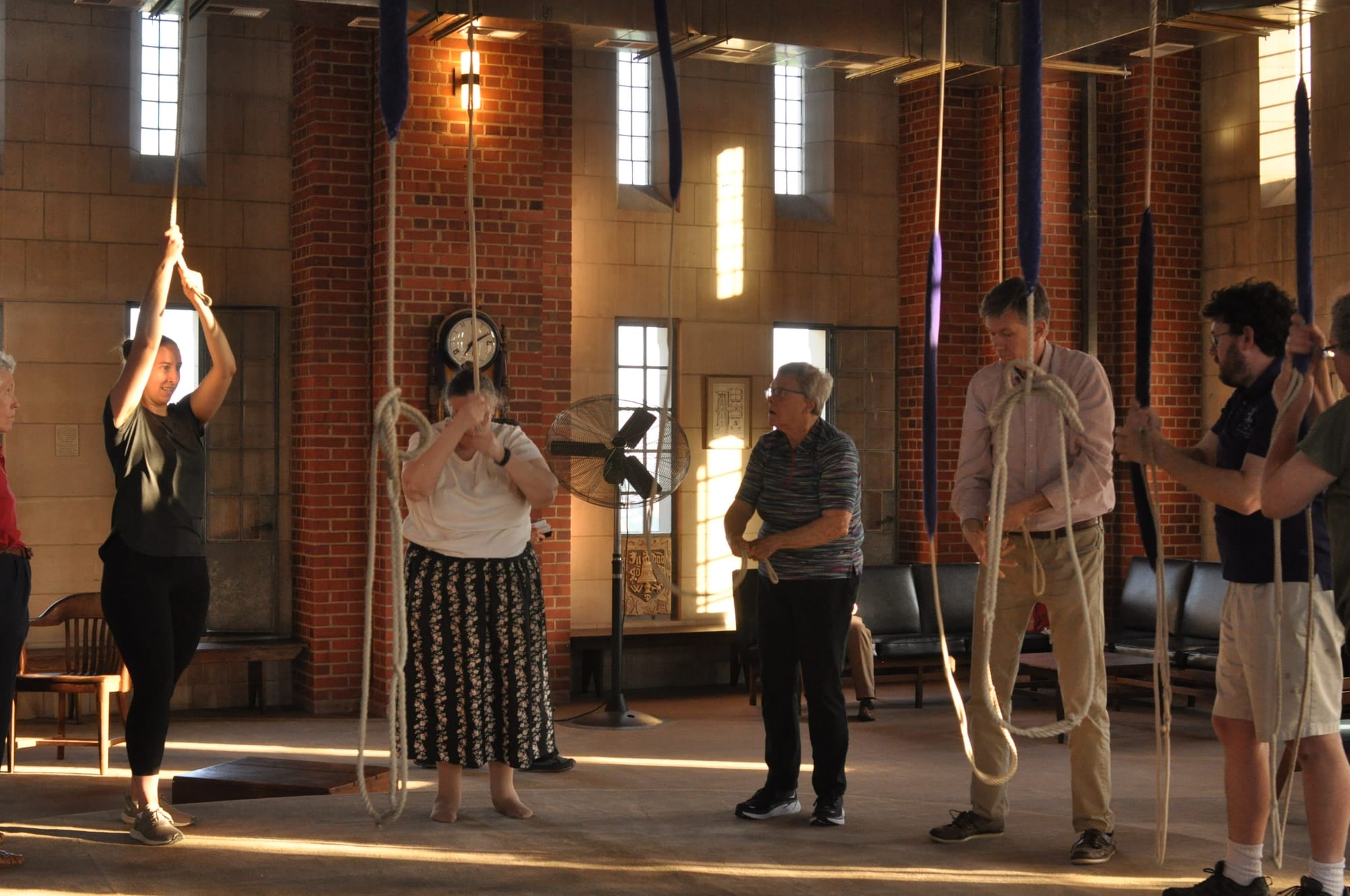
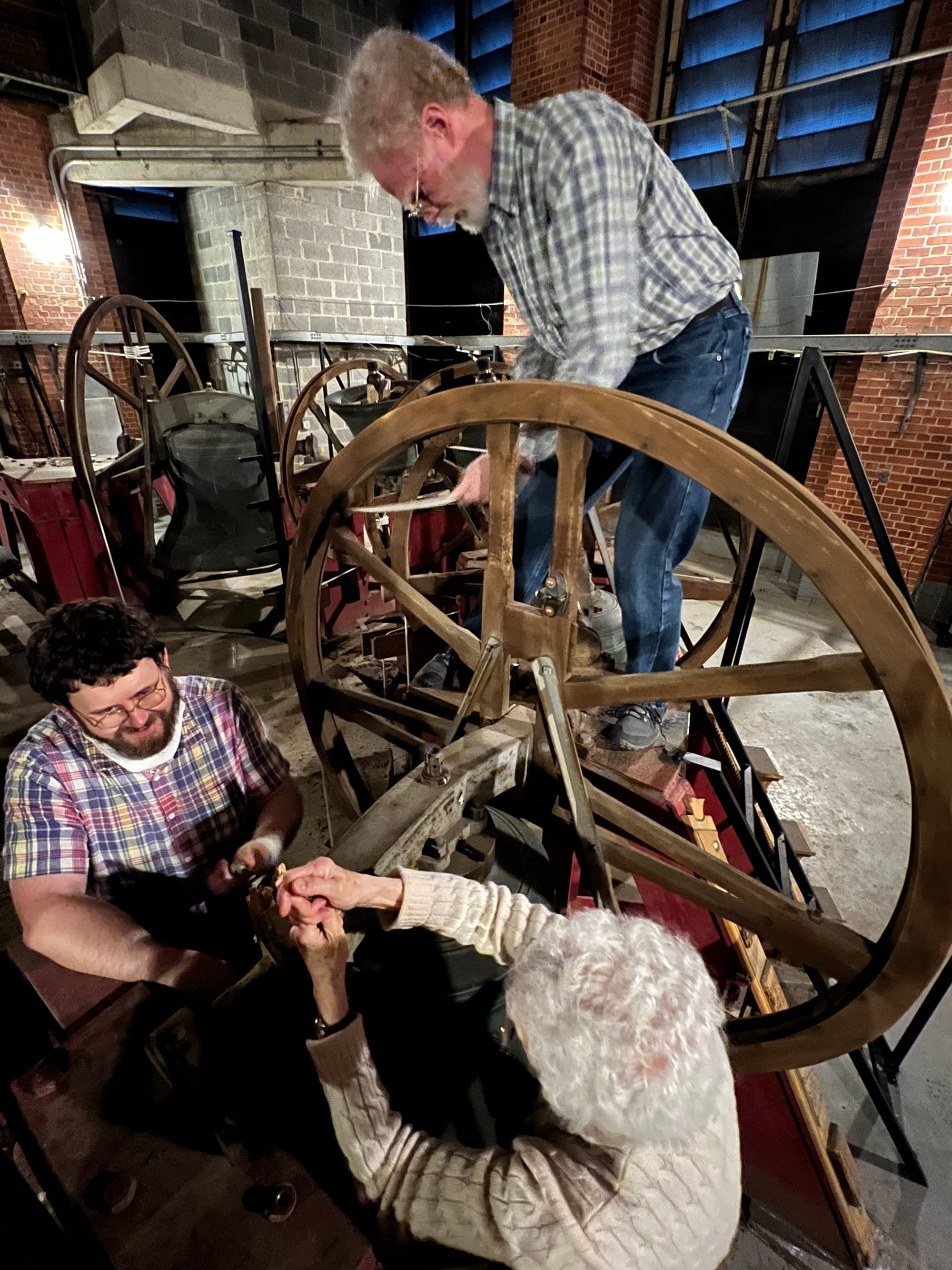
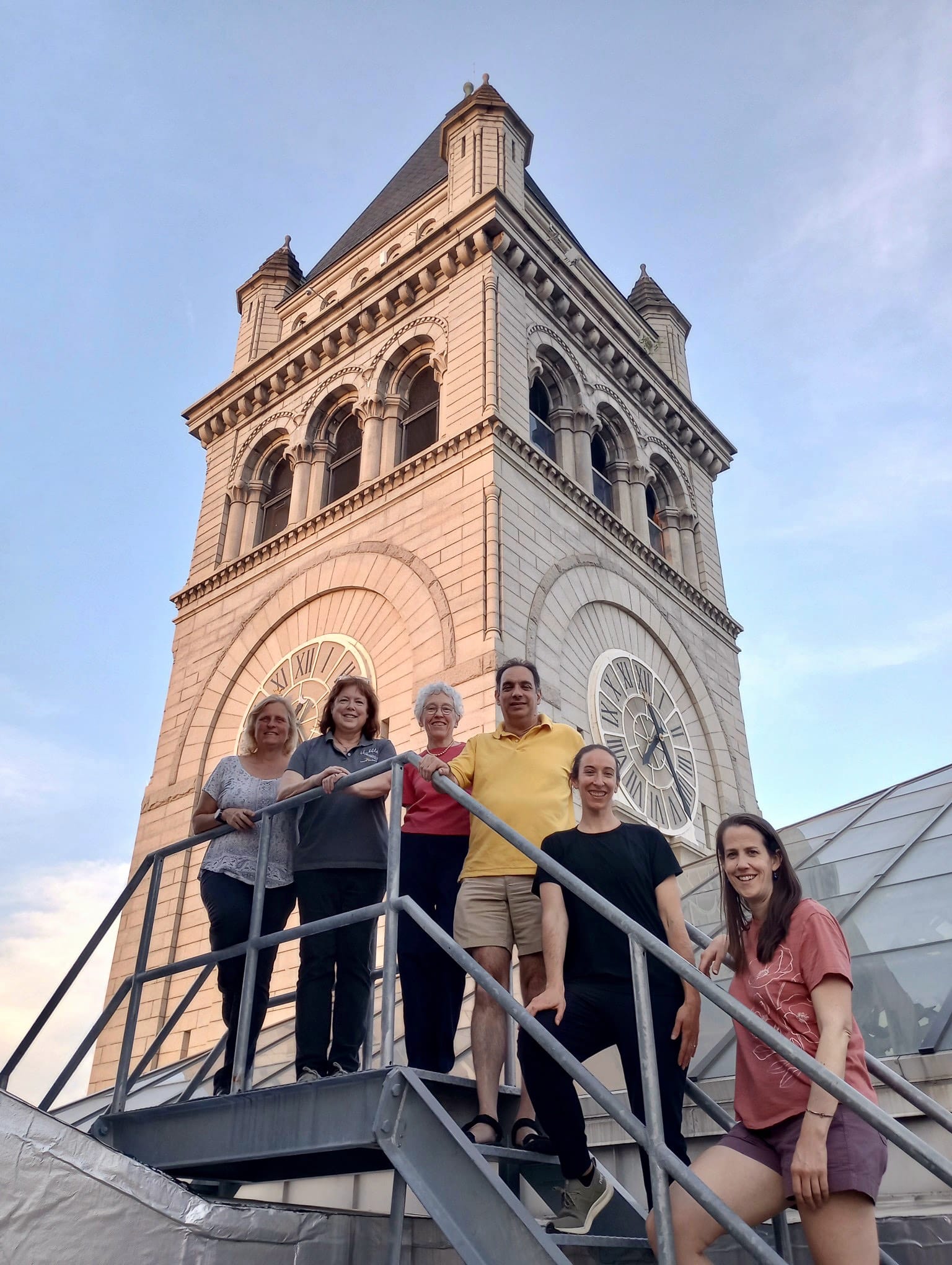
(Photos courtesy of Alethea Merelos)
Ann Martin no longer rings peals, but she continues showing up to the clubhouse in the sky many Tuesdays for ringing practice, and she teaches newbies what she knows from her decades of ringing experience. When she doesn't or can't ring the bells at the Cathedral, she uses hand bells.
"I will keep doing this as long as people are able to do it," she says. "I'll keep going as long as I can."
With your help, we pursue stories that hold leaders to account, demystify opaque city and civic processes, and celebrate the idiosyncrasies that make us proud to call D.C. home. Put simply, our mission is to make it easier — and more fun — to live in the District. Our members help keep local news free and independent for all: